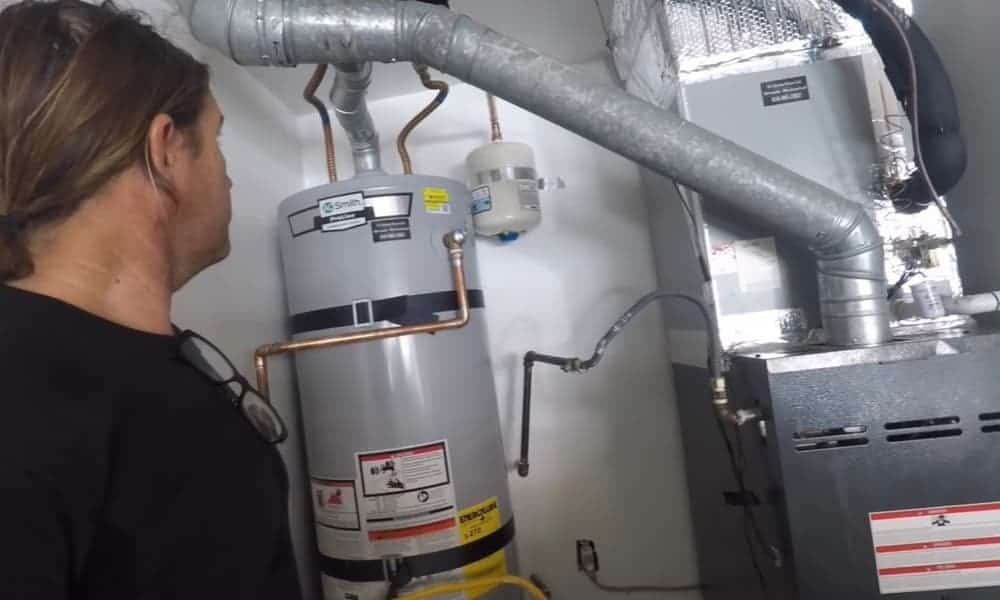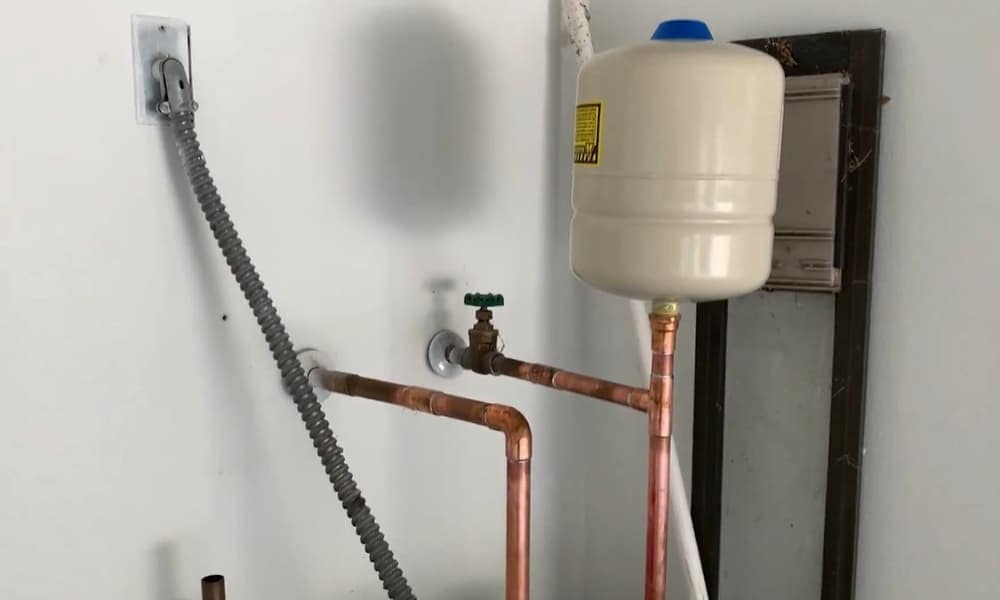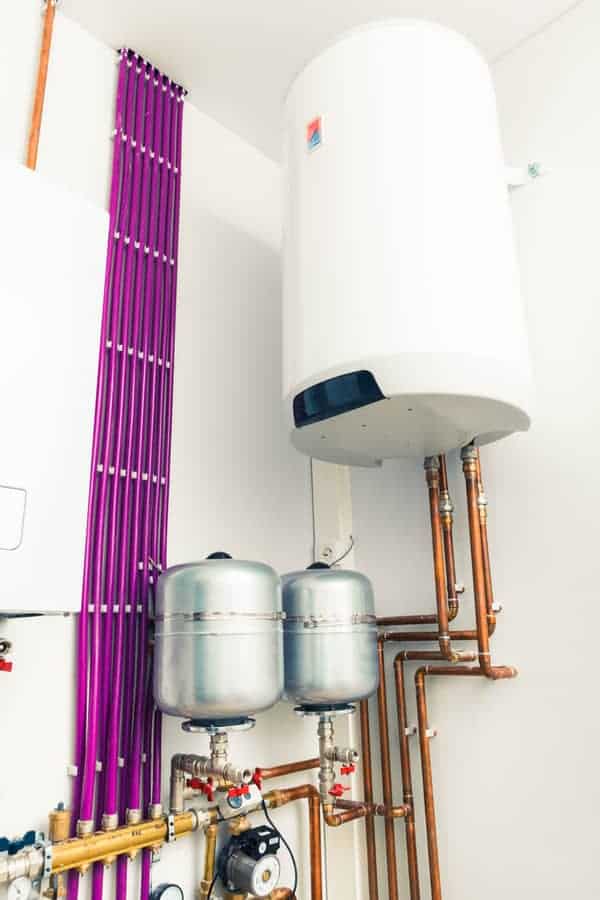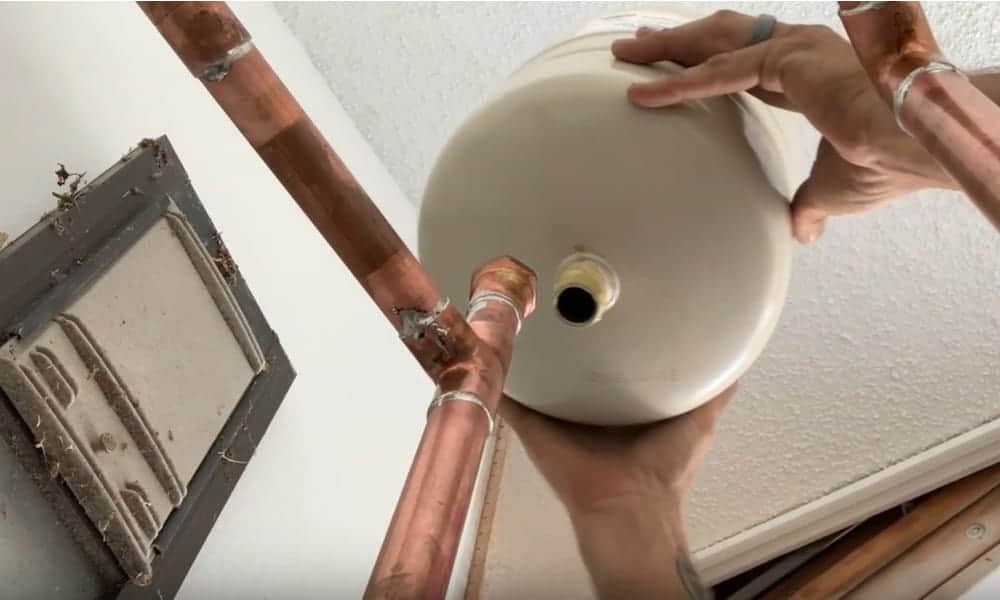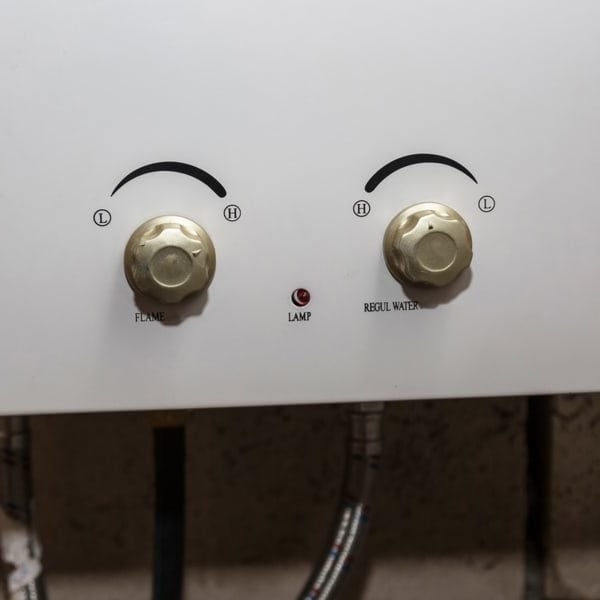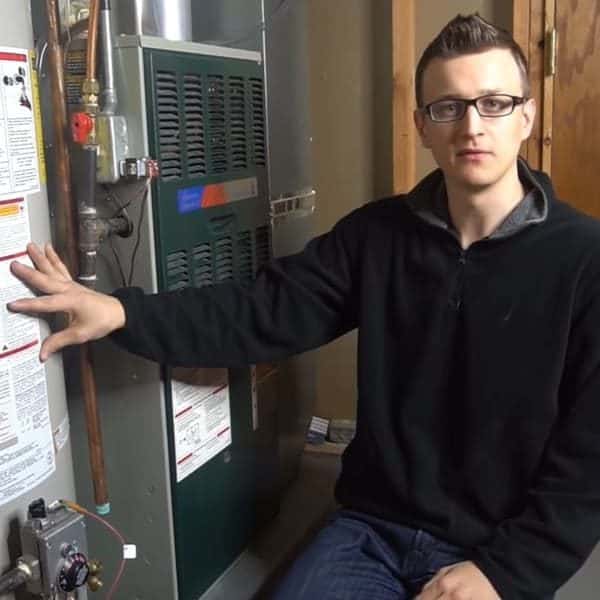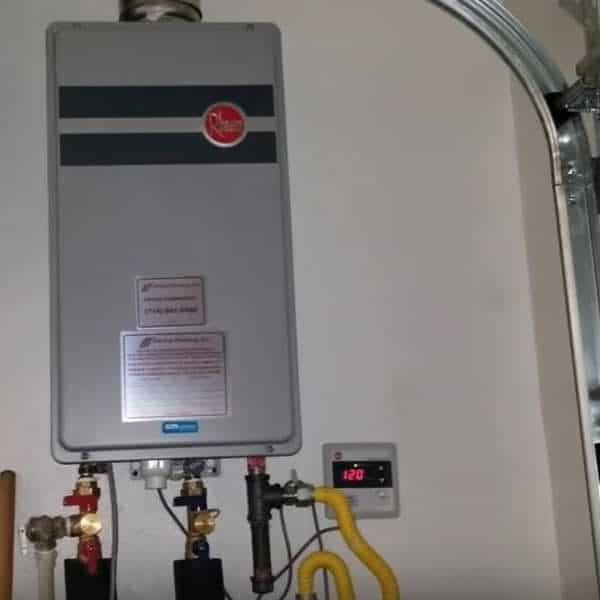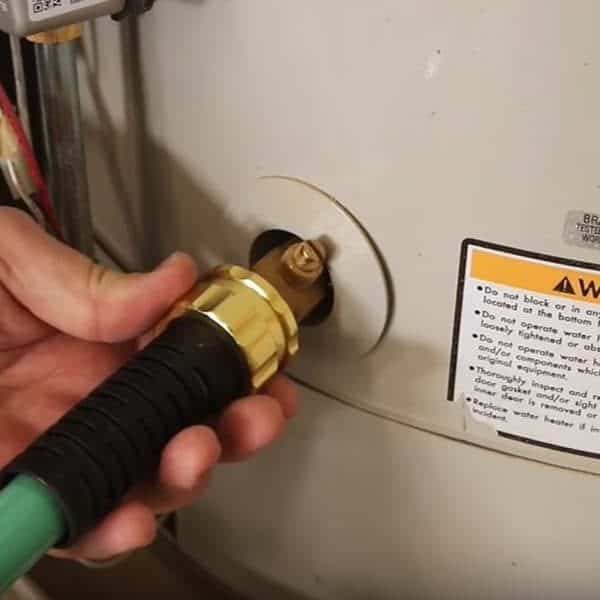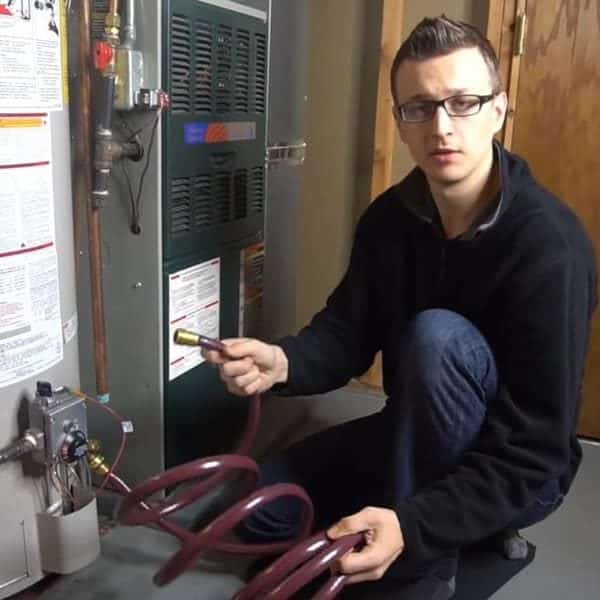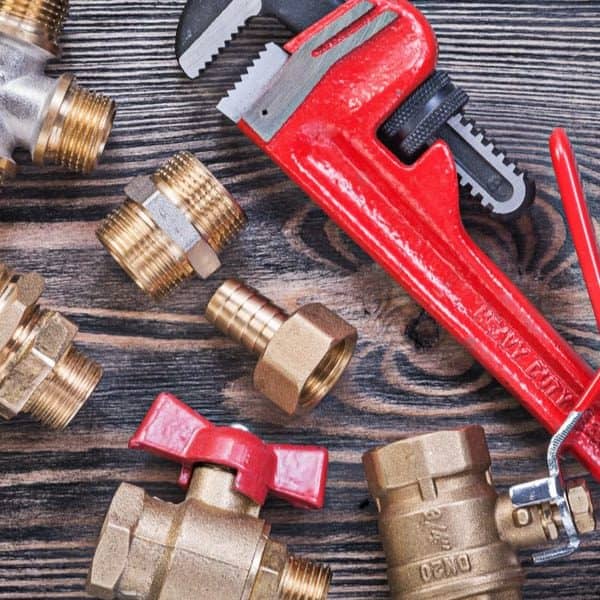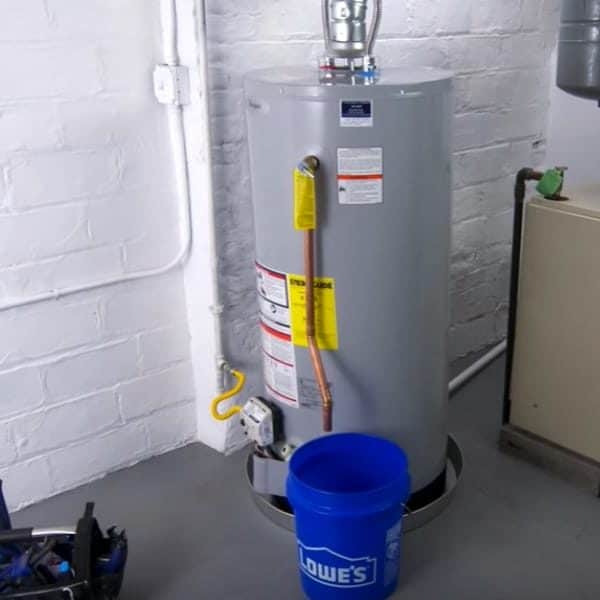If you have a traditional water heater with a tank, there’s a good chance you also have an expansion tank – but what is it for? How does it work? Is it necessary? And how long should it last before it needs to be replaced?
In this post, we answer these questions and more as we discuss water heater expansion tanks and all the things you need to know about them.
What is a water heater expansion tank?
Water heater expansion tanks, also known as thermal expansion tanks, are devices that are attached to water heating systems to regulate any excess pressure that may build up.
They are usually installed above the regular water heater on the cold water line just before the water enters the regular tank – although they can be installed anywhere along the cold pipe before it reaches the heater.
Why do we need water heater expansion tank?
When water is heated, it expands – for example, 150 gallons of water at room temperature would become 152 gallons when heated to 120°F. This is known as thermal expansion, and when it occurs, this extra volume of water needs somewhere to go.
In the past, most home plumbing systems were what’s known as “open”. In an open system, when water expands, it can escape back into the city water supply, so there’s no build-up of pressure within the system.
However, when the water flows back out of a house and into the main water system, there is the potential for it to contaminate the general water supply, so nowadays, in most places in the US, open systems are no longer allowed.
Instead, most homes have “closed” or self-contained systems. This means they are fitted with a check valve or a backflow valve, which prevents water from flowing back into the municipal water supply system once it has reached your home.
The problem with this is that when the water in your tank is heated, it expands, and in a modern closed system, the extra volume of water has nowhere to go.
This is where the expansion tank comes in since it provides an outlet where the extra volume of water can be sent and stored. Then, when the water cools down and retracts, the excess water volume in the expansion tank flows back out into the system.
There are two main reasons why this is important:
1. Regulate pressure and reduce fluctuations
The first reason why it is important to have an expansion tank is to regulate the pressure. If the pressure increases in the system, in the worst-case scenario, it could cause your main tank to explode – although this is unlikely.
However, even if the tank doesn’t explode, if the expanded water has nowhere to flow, you will constantly have fluctuating water pressure, depending on the temperature of the water.
This means, for example, some days you may have high pressure in the shower but other days, you may just have a low-pressure dribble – which is hardly desirable.
2. Protect your plumbing system and appliances
Another reason why it’s important to have an expansion tank is that increased water pressure is likely to reduce the lifespan of your plumbing system, cause leaks, stress plumbing fixtures and even damage household appliances like your washing machine and your dishwasher.
A good analogy is that it’s a bit like having high blood pressure. It’s unlikely to cause any harm in the short term, but if you live with high blood pressure in the longer term, it’s likely to do harm to various parts of your body and ultimately lower your life expectancy.
In any case, in many areas, the law states that you must have an expansion tank installed in your home if you have a traditional heating system with a tank – so you should check your local regulations for further details about where you live.
How do water heater expansion tank work?
Expansion tanks look a bit like propane bottles and usually sit above your main tank. Inside, they are half-filled with water and half-filled with compressed air.
The tank also contains a butyl rubber bladder, which expands or deflates according to the pressure in the system, causing water to flow into or out of the expansion tank and so regulating the overall pressure of the water.
However, unlike a regular tank, they aren’t used to store water – once the pressure drops again, the water flows out of the expansion tank and back into the system.
Do on-demand heating systems need water heater expansion tank?
Since modern on-demand hot water heaters don’t have tanks, they don’t need expansion tanks.
This is because water is only heated when it’s needed – tankless water heaters don’t heat a large quantity of water, which then expands and sits in a tank, so the water pressure of the system won’t fluctuate due to this reason.
Are water heater expansion tank useful if you have an open system?
If you have an open system, it can sometimes still be beneficial to have an expansion tank to regulate fluctuating pressure in your system.
Although there will never be any danger of enough pressure building up in your system to cause an explosion, sometimes the pressure may not be stable – and an expansion tank can resolve this issue. They can also help prevent dripping faucets and toilets.
which size of water heater expansion tank you need?
When choosing an expansion tank, one of the key features is the size.
If you choose one that’s too big for your needs, it doesn’t matter too much – apart from the fact that it takes up more space.
However, you should avoid choosing one that’s too small since if your expansion tank doesn’t have the capacity to hold all the expanded water, it will simply fill up.
After this happens, the expanding water will have nowhere to go, which will cause the pressure to build up in your system.
Choosing the correct size depends on two factors – the size of your main heater tank and the pressure of the water in your system.
To give you an idea of the kind of size you need, if you have a small tank of 40-60 gallons and a pressure of 40-50 PSI (the ideal pressure), you will need an expansion tank of two gallons.
However, with a main tank of the same size and a pressure of 60-80 PSI, you will need an expansion tank of 3.2 gallons.
For an 80-gallon main tank and a pressure of 40 PSI, you will need an expansion tank of two gallons. However, with a pressure of 50-60 PSI, this needs to be increased to 3.2 gallons – and with a pressure of 80 PSI, you will need an expansion tank of 4.4 gallons.
How can you install an expansion tank?
DIY installation is not recommended for expansion tanks. The plumbing procedure is too complicated for regular DIYers – and apart from anything else, a full expansion tank holding two gallons of water can get very heavy, so it needs to be installed securely so it won’t fall.
For this reason, if you don’t have the necessary skills to install an expansion tank – and you don’t already know how to do it – we recommend against trying to install it yourself and advise you to have it done by a professional.
How much do water heater expansion tank cost?
Expansion tanks vary in price depending on the size and the quality. The most inexpensive two-gallon versions can be as little as $40 while a higher quality tank of over four gallons can cost you up to $200 and more.
How long do water heater expansion tank last?
The lifespan of expansion tanks is highly variable and can depend on the quality of the unit, the quality and hardness of your water and how well you keep it maintained.
Most tanks come with a warranty of five years, and with proper maintenance, you can safely leave it for one more year after the warranty expires – so in other words, expect to replace your expansion tank once every six years.
Do water heater expansion tank require maintenance?
Ensuring your expansion tank receives proper maintenance will allow you to keep it running for as long as possible.
The best solution is to have it checked over by a professional plumber once a year, in which case, it should still be functioning correctly at the end of the warranty period.
How can you test if your water heater expansion tank is still working?
If you think there is a problem with your expansion tank, there are a few things you can do to test it. Here are some things you can try:
1. Pay attention to the water pressure in your system
The first and most basic test is simply to pay attention to the water pressure in your system and to check the flow visually.
If you sometimes open the faucets and find that there is a burst of water at high pressure followed by decreasing pressure and then a steady flow, it’s an indication of a pressure imbalance in the system.
If the problem is related to your expansion tank, this is especially likely to happen when somebody uses a lot of hot water followed by none being used for a while.
However, be aware that this only indicates the possibility that a faulty expansion tank may be to blame since there are other causes for this kind of issue.
2. Tap the tank with something metallic
As we mentioned above, expansion tanks are half-filled with water in the bottom and half-filled with compressed air at the top.
This means if you tap the tank at the top and at the bottom with something metallic like a wrench, the noise from the top and from the bottom should be quite different.
If you tap it and the noises are different, it means your tank is probably ok – but if the noise from both parts is the same, there is a problem with the tank.
3. Bleed air from the Schrader valve
At the top of your expansion tank, you should find a small valve like the ones found on tires called a Schrader valve. A simple and reliable test to check the condition of your tank is just to bleed a little air from this valve.
If air comes out, it means the bladder inside is still functioning correctly. However, if water comes out, there is a problem with the bladder and you’ll need to have the tank checked by a professional or replaced.
4. Check the pressure with a gauge
This method is the most reliable way to check that your expansion tank is working correctly, but unfortunately, it’s also the most complicated – and not everyone will be able to do it.
Start by opening an outdoor faucet with a hose attached and leave it to run for about 15 seconds. This is to reduce any pressure that has built up in the system.
Next, attach a pressure gauge to the same faucet and measure the pressure in your system.
After that, turn off the water supply to your house and open a faucet inside to let off all the pressure in the system.
Connect the outlet of your pump to the Schrader valve on your expansion tank – the reading on the pump’s gauge will tell you the pressure inside your tank. In most cases, this should match the pressure you measured from your outside faucet.
If it doesn’t match, use the pump to adjust the PSI to the correct level.
However, for most people, it will be preferable to have a professional carry out this procedure.
If you have more than one regular tank, do you need extra expansion tanks?
If you have two or more regular tanks linked up on the same system, you can either choose to have one expansion tank for each or one large expansion tank for both or all of them.
The important thing is to have enough capacity in your expansion tank or tanks to cope with the increased volume of water that may be experienced by the whole system due to thermal expansion.
An essential part of your water heating system
As we have seen, in most closed systems with traditional-style water tanks, expansion tanks are essential. They relieve the build-up of pressure due to thermal expansion, they reduce the danger of explosions and they help regulate fluctuations in water pressure.
They aren’t too difficult to understand, and as long as you keep them well maintained, they should last at least five or six years. However, to have one installed, maintained or repaired, we recommend you call in the pros unless you have a high level of plumbing competence.
